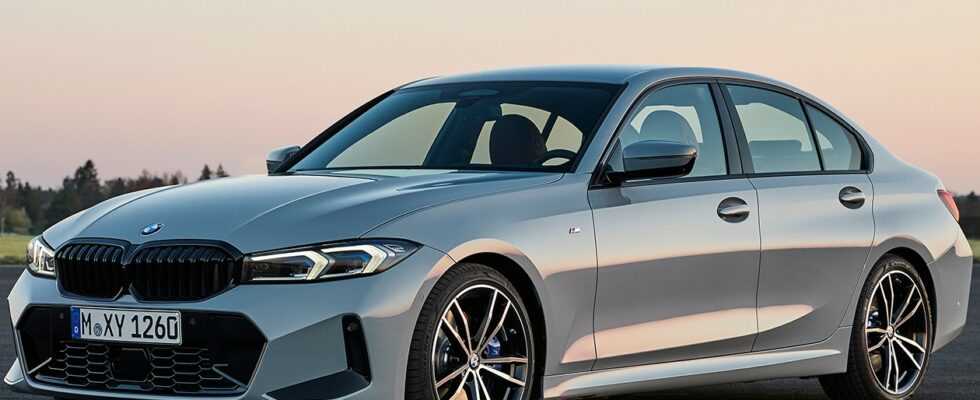Brand core, volume model, the BMW par excellence – the 3 Series can be described in many ways. The current generation is the most successful in this period with 1.1 million units sold in the first three years of production. Now the bestseller is being revised. The main change is to be found inside.
Of course, the optics were also fine-tuned, after all, such a model revision is also called a facelift. Surprisingly, the BMW kidneys have been changed, but not significantly enlarged, as was the case with the last 7 Series facelift. In return, the air intake has grown underneath, while the intake surfaces on the left and right have shrunk in return. The apron has also been renewed at the rear. Whether this is more coherent than before is up to the reader to judge. Depending on the equipment, the exhaust tips are nine or ten centimeters in diameter. The M sports package is still available as an option, and the Pro sports package is also available as an extension, which includes the M sports brake system with red brake calipers. New BMW world in the interior Say goodbye to the interior BMW is gradually moving away from a classic dashboard landscape, which is divided into a speedometer display (round instruments were only available in the basic version anyway) and a central touchscreen. The three now also gets the curved display, which is a frameless, slightly curved glass surface behind which two displays are combined into one. The one behind the steering wheel measures 12.3 inches, the other is a real gem at 14.9 inches. Of course, the new BMW operating system OS 8 runs and of course you have saved a lot of buttons. And, of course, that’s supposedly better to use than before. We recommend trying it out for yourself, because this new BMW world has not yet convinced us in the latest models. At least the legendary rotary pushbutton actuator, which has been omitted in the new generation of the 2 Series Active Tourer, has been retained. The button layout around it hasn’t been tweaked either. For example, there is still one button for each driving mode. The designers would have liked to have been able to copy one thing from the 2 Series Active Tourer. In this case, the display is more beautifully integrated into the dashboard because there is no visible fastening strut on the right. In the three, the bracket is not as obtrusive as in the facelifted X7 or in the iX, but it is still there, which disturbs the look. Austria festival under the hood Little changes on the engine portfolio, it remains the largest engine selection of all BMW model series: two plug -in hybrid drives, as well as four petrol and four diesel engines with four or six cylinders. The engine of the 330i was further developed and now has a manifold integrated into the cylinder head. The four diesels and the only six-cylinder petrol engine 340i are mild hybrids with an 8 kW/11 hp electric motor. The power range extends from 150 to 374 hp. Incidentally, 95 percent of the 3 Series drives are produced in the BMW engine plant in Steyr. The six-cylinders in general and others optionally are combined with all-wheel drive, the others drive the rear wheels. From now on, all 3-series will be delivered with an eight-speed automatic (or sports automatic) with shift paddles, and a manual transmission is no longer available for the 318d either. More equipment as standard has been expanded the standard equipment. Three-zone climate, front and rear parking sensors, BMW Live Cockpit Plus including navigation system and the storage package are now always on board. The wheels are at least 17 inches in size as standard. Classic for facelifts: four new paint colors. If you like it more exclusive, you can choose between 150 individual BMW paint finishes. The 3 Series is built in Munich for the Austrian market. In addition, he comes from Shenyang in China and from San Luis Potosí in Mexico. Prices range from 46,750 euros for the BMW 318i to 78,400 euros for the 340i xDrive. Launch in July.
source site-13
